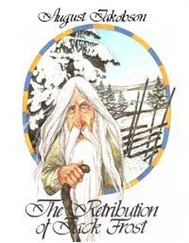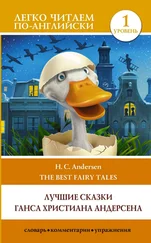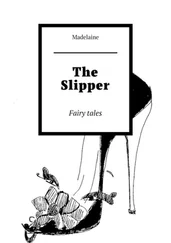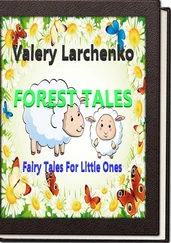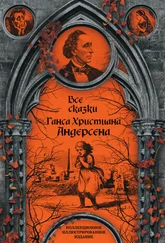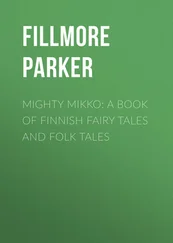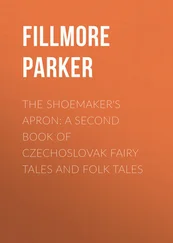Ганс Андерсен - Fairy Tales
Здесь есть возможность читать онлайн «Ганс Андерсен - Fairy Tales» весь текст электронной книги совершенно бесплатно (целиком полную версию без сокращений). В некоторых случаях можно слушать аудио, скачать через торрент в формате fb2 и присутствует краткое содержание. Жанр: Старинная литература, на английском языке. Описание произведения, (предисловие) а так же отзывы посетителей доступны на портале библиотеки ЛибКат.
- Название:Fairy Tales
- Автор:
- Жанр:
- Год:неизвестен
- ISBN:нет данных
- Рейтинг книги:4 / 5. Голосов: 1
-
Избранное:Добавить в избранное
- Отзывы:
-
Ваша оценка:
- 80
- 1
- 2
- 3
- 4
- 5
Fairy Tales: краткое содержание, описание и аннотация
Предлагаем к чтению аннотацию, описание, краткое содержание или предисловие (зависит от того, что написал сам автор книги «Fairy Tales»). Если вы не нашли необходимую информацию о книге — напишите в комментариях, мы постараемся отыскать её.
Fairy Tales — читать онлайн бесплатно полную книгу (весь текст) целиком
Ниже представлен текст книги, разбитый по страницам. Система сохранения места последней прочитанной страницы, позволяет с удобством читать онлайн бесплатно книгу «Fairy Tales», без необходимости каждый раз заново искать на чём Вы остановились. Поставьте закладку, и сможете в любой момент перейти на страницу, на которой закончили чтение.
Интервал:
Закладка:
THE HILL OF THE ELVES (ELVERHØR I, 1845)
This tale is based on an old Danish folk tale. Like many writers of his time, including J. L. Heiberg, Andersen had a strong interest in elves; in 1830 he had written a poem that dealt with them. He was also influenced by the poet Just Mathias Thiele (see the note directly above).
CLOD HANS (KLODS-HANS, 1855)
The naive and innocent hero who competes with his two older brothers for the hand of a princess is a common character in European folklore, and this tale type was widespread in the late Middle Ages. Andersen’s humorous version is intended to poke fun at the marriage rituals of the upper classes.
WHAT FATHER DOES IS ALWAYS RIGHT (HVAD FATTER GØR, DET ER ALTID DET RIGTIGE, 1861)
Andersen heard a folk version of this tale as a child. The story of two peasants who manage to make their way through life despite their stupidity was a common tale type in European folklore. The characters are appealing because they are so good-natured, and because of their good hearts, fortune inevitably shines on them.
ORIGINAL FAIRY TALES
THE SHADOW (SKYGGEN, 1847)
The major source for this tale is Adelbert Chamisso’s fairy-tale novella Peter Schlemihl (1813), about a young man who sells his shadow to the devil and wanders the world in search of salvation. E. T. A. Hoffmann also dealt with the Doppelgänger motif in his remarkable stories “Die Abenteuer der Sylvester Nacht” (“The New Year’s Adventure,” 1819) and “Die Doppeltgänger” (“The Doubles,” 1821). Andersen was familiar with these stories; he even makes reference to Chamisso’s story at the beginning of his tale, which he wrote in Naples in June 1846. Perhaps one of Andersen’s most personal and most profound psychological tales, it is a symbolic representation of his relationship with Edvard Collin, the son of his patron, whom he admired and loved most of his life. Andersen was frustrated because Collin never allowed the two to become intimate. Collin never even permitted Andersen to use the informal word for “you” (du in Danish) in addressing him; instead, Andersen had to use the formal you (de, which translates as “thou”). This situation disturbed Andersen, who felt humiliated by it. The more famous he became, the more he wished Collin would recognize him and speak and write to him on equal terms. “The Shadow” can thus be regarded as a tale of bitter revenge. However, more than just a personal vendetta, it can also be viewed as a psychological exploration of the master/slave relationship and a philosophical exposition on the nature of identity. It is also related to Andersen’s works about art, for a learned man who produces works of art can wind up being obfuscated by the shadow they cast.
THE LITTLE MERMAID (DEN LILLE HAVFRUE, 1837)
Andersen first wrote a version of this tale in his play Agnete and the Merman (1833), which incorporated his tender feelings for Edvard Collin; indeed, the play and the tale “The Little Mermaid” have often been interpreted as a representation of Andersen’s unrequited love for Collin. However, the motif of a water nymph who desires a human soul has deep roots in medieval folklore about mermaids, water nixies (water sprites), sirens, and sylphs. This tale is clearly related to Friedrich de la Motte Fouqué’s fairy-tale novella Undine (1811), in which a sprightly water nymph seeks a human soul through marriage with a young knight. Set in the Middle Ages, this tragic story shows how Undine wins the love of a handsome aristocrat and is transformed into a devout and pious Christian. However, when her husband betrays her, she is compelled to revert to her pagan condition and to kill him. E. T. A. Hoffmann, a good friend of Fouqué, used the tale as the basis for his opera Undine (1816), and other operas, such as Antonin Dvorák’s Rusalka (1900), have been based on the plot.
Andersen recast the water nymph as a mermaid who redeems herself by refusing to take revenge on an innocent prince. Instead, she sacrifices herself, and Andersen makes it clear she will gain some kind of salvation because of her good deeds.
Andersen’s version served as the basis for numerous films in the latter part of the twentieth century. The Walt Disney Company made two important animated films based on Andersen’s “The Little Mermaid,” and Russian, British, Czech, and Danish filmmakers also have adapted the story for the cinema.
THE EMPEROR’S NEW CLOTHES (KEJSERENS NYE KLÆDER, 1837)
This tale can be traced to the fourteenth-century Libro de Patronio (Patronio’s Fifty Stories ) , by Prince Juan Manuel, who collected Arab and Jewish stories and published them in Spanish. In the Spanish tale, the weavers declare that only men who are truly the sons of their fathers can see the clothes they make; otherwise, the clothes are invisible. In the oral and literary traditions of Europe, the exposure of the emperor occurs in a variety of ways; the tricksters—con men, weavers, or tailors—use various tests to expose the gullibility and pomposity of rulers. Andersen apparently added the child in his narrative at the last moment in order to associate innocence with truth.
THUMBELINA (TOMMELISE, 1835)
Andersen’s tale—his unusual version with a female Tom Thumb—owes a great debt to oral tradition and literary versions that also can be traced to “Little Tom Thumb” (1697), written by Charles Perrault, and to “Thumbling” (1815) and “Thumbling’s Travels” (1815), published by the Brothers Grimm. Folk stories about Tom Thumb began appearing in English chapbooks in the seventeenth century. According to Arthurian Legend, the magician Merlin grants a childless couple a child who is no bigger than a thumb. Named Tom Thumb, the little creature, assisted by fairies, faces numerous dangers because of his diminutive size. Many of the situations are comic, and Tom must learn how to use his wits to survive. The plots of similar tales found in Japanese, Indian, and European lore vary, but they all begin with a separation of Tom from his parents that sets off a chain of episodes as he tries to find his way home. Andersen’s contribution is the invention of a female protagonist and her conventional marriage with a prince.
THE NAUGHTY BOY (DEN UARTIGE DRENG, 1835)
This tale is based on a work by Greek lyric poet Anacreon (c.582-c.485 B.C.), who wrote short poems called monodies (lyrical verses for a single voice) that celebrated love and wine. Andersen was probably influenced by Christian Pram’s translation of the Anacreon poem. In contrast to Anacreon, Andersen provides an ironic view of the power of love in this story.
THE GALOSHES OF FORTUNE (LYKKENS KALOSKER, 1838)
This story can be considered one of the first science-fiction tales in European literature. It consists of time-travel episodes in which people come upon “lucky” galoshes that transport them in time and compel them to consider their real situations. The galoshes are somewhat related to the folk motif of seven-league boots that enable people to travel great distances in a matter of seconds. However, seven-league boots are rarely used to carry a protagonist to the past or the future, as the galoshes do in Andersen’s tale.
THE GARDEN OF EDEN (PARADISETS HAVE, 1839)
Andersen may have first heard this tale as a child, but it is more probable that he read or heard about Madame d‘Aulnoy’s fairy tale “Île de la Félicité” (“The Island of Happiness”), which was incorporated in her novel Histoire d’Hypolite, comte de Duglas (1690), translated into Danish in 1787. In this tale the prince of Russia is transported by Zephyr, the west wind, to a paradise and spends centuries there. He loses his love and his life when he tries to return to Russia and forgets the warning of the princess of paradise never to descend from his horse, otherwise Death would capture him.
Читать дальшеИнтервал:
Закладка:
Похожие книги на «Fairy Tales»
Представляем Вашему вниманию похожие книги на «Fairy Tales» списком для выбора. Мы отобрали схожую по названию и смыслу литературу в надежде предоставить читателям больше вариантов отыскать новые, интересные, ещё непрочитанные произведения.
Обсуждение, отзывы о книге «Fairy Tales» и просто собственные мнения читателей. Оставьте ваши комментарии, напишите, что Вы думаете о произведении, его смысле или главных героях. Укажите что конкретно понравилось, а что нет, и почему Вы так считаете.

![Ганс Андерсен - Ганс Чурбан[другой перевод]](/books/95480/gans-andersen-gans-churban-drugoj-perevod-thumb.webp)

